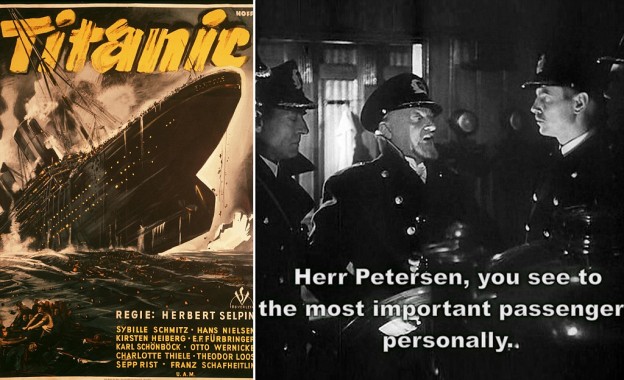JAMES CAMERON’S TITANIC OBSESSION WITH NAZI SYMPATHIZER LENI RIEFENSTAHL
by R. Mark Musser
One of the most intriguing facts of the Nazi Party membership rolls is how many of its adherents belonged to what today would be considered the green movement. Even many ‘greens’ who were not Nazi Party members, like Leni Riefenstahl (1902-2003), the infamous propaganda filmmaker for the Third Reich, became caught up in the new movement. Nazi biologist Walther Schoenichen asserted that National Socialism was the political fulfillment of more 100 years of German Romanticism. With its strong emphasis upon celebrating the authenticity of the German folk people (das volk) indigenously rooted in the natural landscape of their homeland in great contrast to the liberalism of the Enlightenment and the Industrial Revolution, German Romanticism is one of the great foundational pillars of modern environmentalism. While in hindsight, some environmental historians may debate over how green the Nazis were in actual practice, the National Socialist aspirations for a greener Germany cannot be denied.
In the 1920’s Leni Riefenstahl was a tomboy movie star who played in popular German mountain films. She starred in such silent, snowy movies as The Holy Mountain in 1926 and The White Hell of Pitz Palu in 1928, not to mention SOS Iceberg in 1933. Weimar Germany was captivated by these realistic nature movies. From his memoirs, Albert Speer recalled that many of his German compatriots sought what he described “a close contact with nature.” He went on to say that their love affair with the great outdoors “was not merely a romantic protest against the narrowness of middle-class life. We were also escaping from the demands of a world growing increasingly complicated.” It was in fact a world which they largely disdained, full of varied responsibilities and demands of them which they would rather not do. In their mind, such an ‘artificial’ world could be overcome through mountain climbing, “often, from the mountain tops, we looked down upon a gray layer of cloud over the distant plain. Down there lived what to our minds were wretched people; we thought we stood high above them in every sense.”
They were looking for purity, simplicity and peace without the modern stress of working and making a living, which was especially difficult in the trying times of the Weimar Republic, “we felt that the world around us was out of balance. In nature, in the mountains and river valleys, the harmony of creation could still be felt. The more virginal the mountains, the lonelier the river valleys, the more they drew us.” Their life in Weimar Germany was characterized by depression and defeat under laissez faire capitalism, but these harsh realities and embarrassments could all be escaped from in the lofty alpine hills where such considerations somehow became unimportant. Abandoned and forsaken by the Weimar Republic, many of them would unfortunately find romantic solace in the isolationist ideology of the Nazi Party.
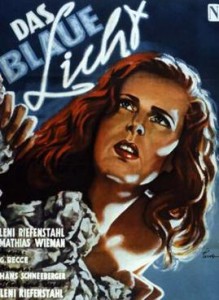
In 1932, Riefenstahl made her own romantic nature film called Blue Light which highlighted the evils of modernism and capitalism. However, Riefenstahl is infamously known as the director of the notorious 1935 propaganda film Triumph of the Will that even manages to showcase the Nazi ‘green’ jobs agenda of the time. In one particular scene at the colossal Nuremberg rally, militant, uniformed Germans are shown with shovels in their hands instead of rifles as they cry out, “we plant trees!” Later, Riefenstahl made the highly acclaimed documentary film Olympia shot at the 1936 Berlin Olympics. The film strongly emphasized the competitive natural strength of the athletes. While Jesse Owens may have gone home with four gold medals and four oak trees as gifts from the Fuhrer, Germany came away with most of the other gold medals.
Riefenstahl became enthralled with Hitler the first time she heard him speak. She became convinced he could lead Germany out of its post-WW I international political chaos. Riefenstahl stayed loyal to Hitler well into the heights of the war, only to be gravely disappointed in the end (like many Germans), especially as the horrors of the Holocaust became fully exposed. She would spend the rest of her life in a vain attempt to disassociate herself from her Nazi past. Even though she was officially de-nazified by both the American and French authorities, her unapologetic defense of her actions during the Nazi era remains unconvincing to this day.
After the war, Leni Riefenstahl followed in the footsteps of Charles Lindbergh. Lucky Lindy had Nazi sympathies in the 1930’s, and later became a radical environmentalist. Over the years he became especially intrigued by indigenous races. Riefenstahl followed suit by moving away from her ‘modern’ Nazi tribalism when she became extremely fascinated with black indigenous races. Riefenstahl relocated to a remote African village to make a documentary film of an almost extinct group of Sudanese called the Nuba. Instead of protecting the indigenous Germans from international Jewish Communism and Capitalism, something needs to be done to protect the primitive Nuba from corrupting, globalist forces.
However, the documentary was never completed. Some have speculated that the reason why the documentary was never made was because she was a perfectionist. Late in life, Riefenstahl became involved with Greenpeace. She died in 2003 at the age of 101.
Robert von Dassanowsky, the director of Film Studies at the University of Colorado, acutely noticed back in 2001 that James Cameron’s epic movie Titanic is based on the German mountain films that Riefenstahl starred in. Although largely ignoring Riefenstahl’s compromised relationship with the Nazis, von Dassanowsky makes a compelling case that Cameron’s Titanic is a German mountain film set upon the sea ice of the North Atlantic.
Von Dassanowsky even went so far to strongly suggest that the heroine in the Titanic, Rose, is actually based on Riefenstahl’s personal character. He then intimates that Cameron may have indeed directed the Titanic to show how Riefenstahl’s untamed feminism eventually overcame her compromised relationship with the chauvinism of the Nazis, represented by her dictatorial fiancé on the ship, whom she never married. In the end, Riefenstahl, like Rose, redeemed herself from the dictatorial Nazi regime.
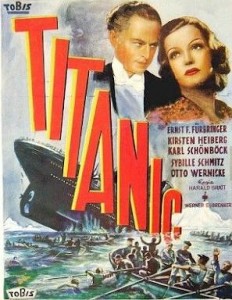
Even more startling, Cameron also borrowed from Nazi Germany’s own version of the Titanic made in 1943. In the Nazi version, the hero of the story is a German officer who blames the English profit crazed capitalistic owners of the ship for sinking the Titanic. In the end, Nature’s iceberg proves to be more powerful than all of the superficial worries and concerns of those attached to the manipulations of the stock market. A romance also develops between a German musician and an already engaged woman. This romance, however, is left undeveloped in the Nazi film. Cameron’s movie seemingly picks up where the Nazis left off by focusing on the romance between Rose and Jake. Jake, of course, is the drifter played by Leonardo Dicaprio who upsets the pre-arranged marriage plans of Rose’s aristocratic fiancé.
Neither is it a coincidence that James Cameron’s Terminator movies that warn about the dangers of modern technology controlling people’s lives echo the defense of Albert Speer at Nuremberg. At Nuremberg, Speer declared that “science will be able to spread pestilence among humans and animals,” and that “chemistry will be capable of inflicting unspeakable suffering upon an increasingly helpless humanity.” With the shockwaves of the nuclear age being recently imposed upon the entire world, he was virtually warning everyone present at the trial – beware. The problem with this, however, is that Speer never complained about this during the war. It only arose only after the technological scales tipped in favor of the Americans.
One also wonders if Cameron’s Avatar was made with Riefenstahl’s never completed Nuba documentary film in mind? Instead of the Nuba, Cameron calls the nature worshiping indigenous tribe in Avatar the Na’vi. Just exactly who are these Na’vi anyway? The answer to that question may be much more compromising than many might assume. Indeed, it was Jewish historian Dr. Harold Brackman who noted that what unsettled him the most about Cameron’s Avatar was that it borrowed heavily from the Neo-Nazism of Savitri Devi. It was Savitri Devi who helped transition the Nazi blood and soil mythology into a Neo-Nazi New Age environmentalism that lurks in the background of the modern green movement.
To add more gasoline to the fire, James Cameron’s hero in both films, Jake, is based on Jack London’s own character. This means that Social Darwinism and the call of the wild certainly means something to James Cameron. It also must be pointed out that while the Nazis did burn Jack London’s Marxist-Socialist books, they left alone his wilderness adventure stories. That Jack London was also a white racist only compromises the issues further. Thus, James Cameron has managed to give the world two spectacular movies starring Jack London and Leni Riefenstahl, all decorated in green socialist themes and wrapped up with romantic streaks of multicultural, indigenous racism.
Certainly James Cameron loathes the mythical Hitler of the modern leftist imagination that trumpets the Nazis as an extreme right wing movement thanks to 80 years of Marxist and Socialist propaganda. On the other hand, do we really believe Cameron does not know Hitler was called “Avatar” by Savitri Devi in her 1958 Neo-Nazi manifesto called The Lightning and the Sun? Put in another way, can the shift to New Age indigenous environmentalism atone for the racist political biology of the Nazi past like getting out of a previous bad marriage? While James Cameron certainly thinks so, the verdict is still out with regard to that particular ecological question.
Indeed, Luc Ferry, the author of The New Ecological Order wrote, “We have to be ignorant or prejudiced not to see it: Nazism contains within it, for reasons that are in no way accidental, the beginnings of an authentic concern for preserving ‘natural,’ which is to say, here again, ‘original’ peoples.” Ferry then goes on to establish the surprising link between Nazi authenticity and modern environmental multiculturalism, “like the aesthetics of sentiment and deep ecology, which also place new value on primitive peoples, mountain folk, or American Indians, the National Socialist conception of ecology encompasses the notion that the Naturvolker, the ‘natural peoples,’ achieve a perfect harmony between their surroundings and their customs. This is even the most certain sign of the superiority of their ways over the liberal world of uprootedness and perpetual mobility. Their culture, similar to animal ways of life, is a prolongation of nature.” Thus, the distinction between National Socialism and a multicultural national geographic is not as big of a repentance as many would like to presume. Indeed, with regard to finding indigenous or authentic mountain peoples for her films, Hitler once observed that Leni “scours the villages in search of the peasant types she requires.”
Copyright April 2011 by R. Mark Musser originally published on the American Thinker.
Permission is herewith given to copy and distribute by electronic or physical means as long as it is not sold – the copyright notice is included and credits are given to the author.
THE ENFORCER AT THE REPUBLICAN CONVENTION by R. Mark Musser

In the conclusion of Clint Eastwood’s 1976 “The Enforcer,” Dirty Harry blows away a Bill Ayers like figure with a bazooka after dispatching a revolutionary terrorist group (called the People’s Revolutionary Strike Force in the film) running loose on the streets of San Francisco. Throughout the film, Dirty Harry is hot on the trail after a Marxist like terrorist group led by a blonde male actor who could easily pass for Bill Ayers. The leading terrorist has a dark haired girlfriend who resembles Bill Ayer’s real wife, Bernadine Dohrn.
Throughout the 1970’s, Bill Ayers and Bernadine Dohrn were heavily involved in the Weather Underground, which was a revolutionary Marxist terrorist group that was born in the helter-skelter counter cultural chaos of the 1960’s that hated authority – especially the police department. In 1970, a San Francisco policeman was killed by the Weather Underground in a bombing attack instigated by Ayers and Dohrn. In 1971, the FBI found a Weather Underground pipe bomb factory that tied Ayers to the crime. “The Enforcer” is certainly loosely based on such and similar events.
The closing credits of the film shows a disgusted Dirty Harry walking away from the mayor he saved as a helicopter drops in on the scene announcing with a megaphone that the San Francisco City Hall has decided to give in to the demands of the terrorists. Dirty Harry’s disgust was well warranted because the true victim of the movie was his female police partner played by Tyne Daly. She was placed in a dangerous situation thanks to San Francisco’s new equal opportunity police department rules. She was shot and killed in all the violent pandemonium immediately preceding the climax of the movie, but saved Dirty Harry in the process. Initially, Dirty Harry was not happy with the working relationship he was forced into, but came to appreciate his new partner as the movie wore on.
In real life, Larry Grathwohl was an FBI informant who had secretly penetrated Bill Ayer’s Weather Underground group in 1969. The Weather Underground wanted to take over America and replace it with a Marxist government with the help of various communist governments across the globe. Grathwohl even overheard Ayers and company discussing putting Americans into internment camps to re-educate them properly. They even bantied around the idea of eliminating some 25 million die hard capitalists if necessary.
Grathwohl has been looking for social justice against Bill Ayers for many years now because he knows that both Ayers and Dohrn were personally responsible for the killing of San Francisco Sergeant Brian McDonnell. Although both of them have been accused of murder, they have never been prosecuted.
After the San Francisco terrorist attack, Ayers and Dohrn participated in the bombing of the U.S. Capitol, the Pentagon and a State Department building. In 1980, they turned themselves into authorities and pleaded guilty to the possession of explosives, but were never prosecuted for the bombings as they were released on a technicality. Dohrn served seven months in prison, but Ayers did not serve any time. In 1981, Ayers sarcastically quipped in an interview with David Horowitz that he was “guilty as sin, but free as a bird. America is a great country.”
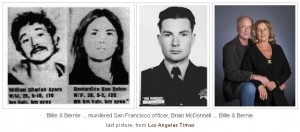
Such ‘punks’ always merited the ire of Dirty Harry. In fact, the Dirty Harry’s cop persona represents the ultimate enemy of the radical left’s hatred for the police department. Even back in the 70’s, Dirty Harry was vilified for his cowboy like form of justice.
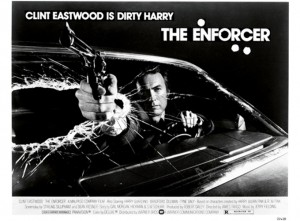
Yet it must also be pointed out that this was a false stereotype as “Magnum Force” makes so clear in 1973. Dirty Harry may have been an out of place cowboy sheriff placed in the modern decadent city of San Francisco, but he was no vigilante. He had no “Death Wish” like Charles Bronson did in 1974. Inspector Callahan, in fact, made this very clear to a group of San Francisco vigilante cops who had crossed over the line in order to clean up San Francisco. Upset with modern political correctness that was strangling the ability to curb crime on the streets, they wanted to secretly take matters into their own hands. Attempting to recruit Dirty Harry into their style of covert justice, he boldly tells them that they have “misjudged” him in a classic tense confrontation. After dispatching these police mercenaries at the end of the film, Dirty mumbles to himself, “a man has got to know his limitations.”
Before “Magnum Force,” in 1971 the original “Dirty Harry” takes on and kills a Charles Manson like figure. Manson, of course, was implicated in the brutal murder of Roman Polanski’s wife, Sharon Tate, in 1969. However, had he not stolen a few dune buggies pretending to be the famous Nazi general Erwin Rommel racing around the southern California desert as if he was the Desert Fox, he may not have been caught for that particular crime. Today, the real Charles Manson is rotting in prison with a green swastika tattooed on his forehead. Charles Manson has claimed to be a strong environmentalist for years. Manson is the environmental founder of ATWA, which stands for Air Trees Water Animals. As recent as 2011, he railed against global warming.
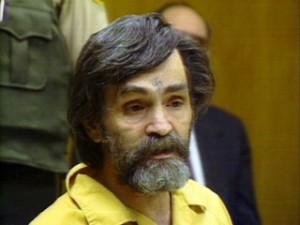
Shockingly, Bernadine Dohrn, is known to have stood up for Charles Manson. After the Manson murders, Ayers and Dohrn called up a War Council among the Weathermen in Detroit. They wanted to launch an attack of chaos against the United States from within the belly of the American beast, and use oppressed Third World countries to help them in the process. At the War Council, Dohrn stood up and gave a fork salute to Charles Manson and screeched, “Dig It. First they killed those pigs, then they ate dinner in the same room with them, they even shoved a fork into a victim’s stomach! Wild!” It is thus perhaps not so curious that the trail of Ayers and Dohrn then winds up in California the following year.
Bill Ayers and Bernadine Dohrn are no longer punk terrorists as they were in their younger days. While Ayers is unrepentant about his past, he himself has grown up in the modern American university emphasizing a leftist academic terrorism instead. Rather than set bombs for the police and government buildings, he has strongly pushed for a leftist/Marxist politically correct agenda that has had no small influence over American public education and the post-modern culture that has stemmed from it.
Before he entered the Oval Office, Bill Ayers had a working relationship with Obama. Although the relationship has appeared to have cooled thanks to the partisan strains of the presidency, Obama’s political career essentially began in the home of Ayers and Dohrn. They also live in the same Chicago neighborhood a few blocks from each other. Journalist Jack Cashill has an excellent case that Bill Ayers even wrote Obama’s autobiography “Dreams of My Father.”
While leftist political pundits made fun of Clint’s speech at the Republican Convention, in truth, his Dirty Harry movies of the 1970’s are showing themselves to be very smart movies indeed. The Dirty Harry trilogy of the 1970’s confronted point blank the counter culture movement that was beginning to drag the United States into its purview, but has since catapulted into political and academic leadership. Would Barak Obama even be president today if Bill Ayers was sitting in prison like Charles Manson?
Where is Dirty Harry these days? Well, he has aged considerably and unfortunately no modern Hollywood actor has replaced him. Nor would any of them even consider such a possibility. The culture of the 1970’s fell in love with the politically incorrect Dirty Harry – but that was then. Hollywood would never dream of presenting Dirty Harry as a hero these days. He is thus greatly missed today. That’s why it was so refreshing to see him back in the saddle at the Republican Convention. With his ad hoc empty chair speech that required no teleprompter to get his point across, Dirty Harry made a lot of people’s day.
Copyright July 2012 by R. Mark Musser originally published on Gulagound.
Permission is herewith given to copy and distribute by electronic or physical means as long as it is not sold – the copyright notice is included and credits are given to the author.
